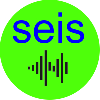Geophysical Methods
exploration, near surface and marine methods
Seismology |
Seismic exploration |
Seismic source |
Seismic Refraction |
Seismic Reflection |
Seismic MASW-REMI |
Borehole |
Marine Seismic |
Seismic Processing-Imaging |

Seismic Processing-Imaging
Geophysical Processing & Imaging From the field to the final volume, seismic data goes through many processes and workflows. Data conditioning encompasses a wide range of technologies designed to address numerous challenges in the processing sequence—from data calibration and regularization to noise and multiple attenuation and signal enhancement. Source & Receiver Corrections: elimination of seismic wavelet variations caused by irregularities in acquisition geometry and other aspects of acquisition. Noise Attenuation: a suite of tools to remove coherent and random noise in land and marine seismic data, including wind and swell noise, mud roll, ambient noise, and seismic interference.PASTE RESPONSIVE AD
Multiple Attenuation: demultiple algorithms to obtain the optimal solutions for a wide range of scenarios.
Velocity Model Building & Updating: Algorithms and workflows that address all acquisition configurations and geologies.
Prestack Migration Algorithms: ability to handle all geological complexities and seismic acquisition environments and designs, including the latest full-azimuth surveys.
Multicomponent Processing: a comprehensive array of algorithms and workflows to maximize the value of your multicomponent data, whether traditional 2C/PZ data from an ocean-bottom cable or PS data from mode-converted shear waves.
Time-Lapse Seismic Processing: a proven approach to 4D processing with step-by-step removal of the effects of differing acquisition systems and unrepeated coverage, using dedicated time-lapse algorithms.
PASTE RESPONSIVE AD